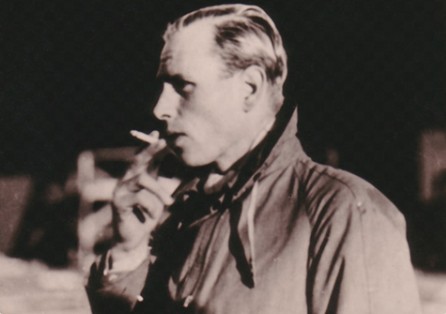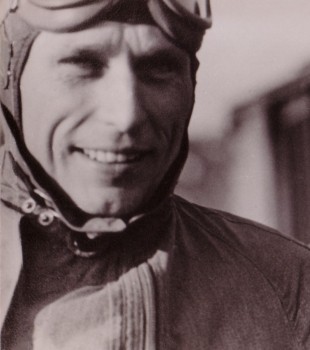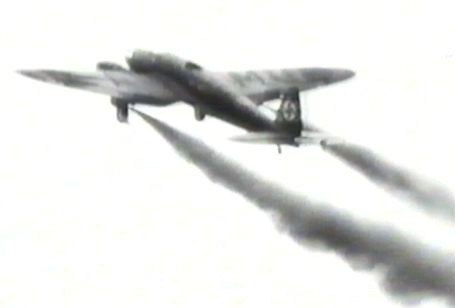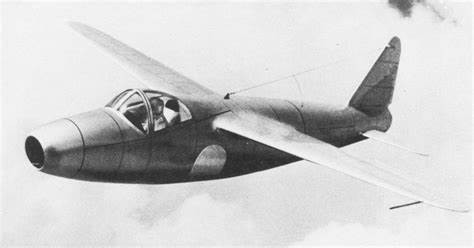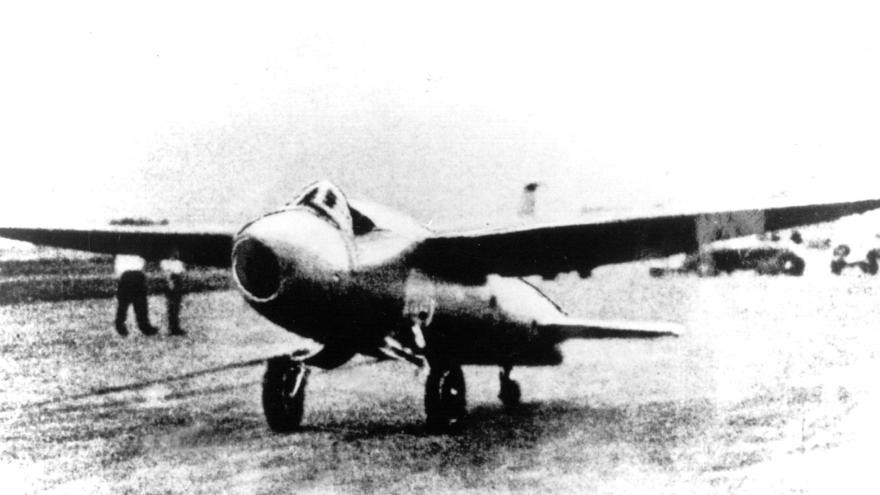75 years ago, on October 18, 1906, Captain Erich Warsitz was born in Hattingen an der Ruhr. His name is closely linked to the history of jet flight: Warsitz accompanied the world's first pure rocket-powered aircraft, the He 176, as well as the world's first jet aircraft, the He 178, at Heinkel, from the beginning of their development as a thoughtful all-rounder and engineer-pilot up until the first flights in the summer of 1939. His flight training began in 1927 in Bonn-Hangelar as a recreational pilot with the Akaflieg. This then led, in stages, to BL and B2 training at various airfields of the then air sports clubs and to C2 training, including blind flying training, at the German Commercial Pilot School (DVS). In between, he obtained the K2 aerobatics license and acquired sea pilot licenses up to C2 at the DVS in Stettin-Finkenwalde, where he also worked during this time.He was a flight instructor. His C2 license also included permission for commercial passenger transport. Later, he obtained all military pilot licenses. During his sea training, he also acquired a pilot's license for "short flights."
After this training, Erich Warsitz joined the "RB-Route" as a flight instructor. This was the code name for "Reichsbahn-Route," which was intended to provide the few "permitted" military pilots in the Reichswehr of the Weimar Republic with the necessary long-distance experience. As a test pilot at the E-Stelle Rechlin, Erich Warsitz flew every aircraft there and soon knew every screw.
When Ernst Heinkel was acquired in 1935 by Werner von Braun, the then completely unknown young employee of the future General Dornberger. was convinced that the rocket engine he had developed at the Kummersdorf Army Artillery Firing Range could also power an aircraft. In the course of this development, the Army High Command at the Reich Ministry of Aviation also requested a pilot for the tests, who not only had technical knowledge and flying skills Not only did he have to have the necessary skills, but – given the expected risks – he also had to be unmarried. Thus, Erich Warsitz joined Wernher von Braun and the group of Heinkel technicians as the 25th employee, into which he quickly became integrated due to his skills, but above all due to his character traits. This is where his lifelong friendship with Wernher von Braun began. After countless setbacks and highly dangerous attempts, which Warsitz survived with great luck. The rocket engine was successfully tested in an He 112 provided by Heinkel. Erich Warsitz's willingness to take risks was indicative of his decision to build a smaller, less safe, but faster airframe, the He 176, for the construction of the pure rocket test aircraft. In April 1938, Erich Warsitz relocated to the Army and Air Force Rocket Development and Testing Center in Peenemunde on Usedom as chief pilot and flight director. At the same time, he was "loaned" to the Ernst Heinkel aircraft factory in Rostock-Marienehe until 1941 for the testing of their special aircraft. Warsitz conducted his first taxiing tests with the He 176 in Peenemunde starting in the summer of 1938, which he continued after the winter break in the spring of 1939. Meanwhile, for technical reasons, a rocket engine from Hellmuth Walter of Kiel had been installed in the He 176 instead of the Braun engine. After initially unsatisfactory tests, Erich Warsitz decided at short notice to make the first flight with the He 176 on the evening of June 20, 1939. Erich Warsitz wasn't the only one who considered this a spectacular event; he was spontaneously promoted to flight captain the next day after a demonstration in front of the top brass of the RLM. Less spectacular, but much more significant for the future of aviation, was the development of a turbine jet engine based on the plans of the physicist Hans-Joachim Pabst von Ohain, who was also sponsored by Heinkel. This, too, Erich Warsitz was involved from the very beginning as an influential test pilot. Here, too, Ernst Heinkel – on his own initiative – had a special test aircraft, the He 178, developed and built, with which, after countless preliminary tests, Erich Warsitz conducted the first flight of a jet aircraft in history on August 27, 1939. The outbreak of war a few days later prevented the immediate continuation of the tests with the He 176 and the He 178. For Erich Warsitz, however, these two aircraft remained the aircraft that marked his flying life and which he accordingly loved. In 1942, Erich Warsitz suffered an accident during a hangar flight with an Me 109 whose fuel line was incorrectly connected. which rendered him unfit to fly for more than a year. He then took over management of his parents' businesses until the In 1945, Erich Warsitz was forcibly abducted by Soviet soldiers from the American sector of Berlin. Because he refused to provide any information about the developments and aircraft he had helped to shape, he was imprisoned for five years in the infamous Siberian penal camp 7525/13. But he survived this too with his tremendous willpower and, upon returning to West Germany in 1950, founded the "Hilden Machine Factory," which manufactured hydraulic power units. As capable and successful as an entrepreneur as he was as a pilot, Erich Warsitz has officially retired for years to a beautiful spot in Switzerland – a place he doesn't allow himself to retire to, given his indomitable energy. Among many other honors, Erich Warsitz was appointed Corresponding Member of the German Aerospace Society in 1980.capitulation put an end to everything.
